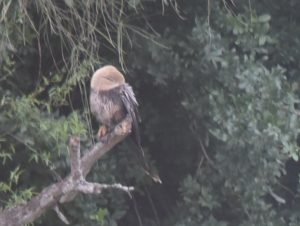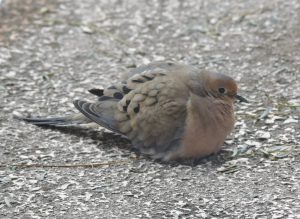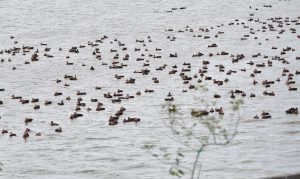
The annual Great Backyard Bird Count (GBBC) came during the coldest days of the year when temperatures dropped below freezing and areas of the Valley experienced power outages. Despite the hardship, residents stocked their bird feeders, bundled themselves in layers of clothing and blankets and sat at their windows counting birds.
The GBBC is an inter-organizational effort of the Cornell Lab of Ornithology, National Audubon Society, and Birds Canada. It is a four day event each February that began in 1998. Birds Canada joined the project in 2009; the event became global in 2013.
Many birds migrate to the Valley’s warmer winter climates, but what happens to the birds when our balmy, subtropical weather turns brutal with freezing drizzle, sustained high winds, and artic-feeling temperatures? Those worried about our avian friends will be glad to know that both resident and visiting birds have ways to survive unseasonable bouts of severe weather.

Here are a few of the ways birds survive the cold:
- Perching birds fluff their feathers to trap heat and slow metabolism.
- They shiver, creating additional heat from circulation and muscle movement.
- Birds of a species find a wind break and huddle together to share warmth.
- At night, birds gather together in thick shrubs, or squeeze together on tree branches that block the wind.
- Birds of all sizes alternately stand on one leg and tuck the other leg under their belly to keep it warm.
- Small birds, shore birds, water birds, and ducks hunker down, covering their legs and feet with their warm bodies.
- They tuck their head under their scapular feathers and conserve heat by breathing air warmed by their body.
- Birds have oil producing glands that allow them to preen a coating of waterproof oil onto their feathers to avoid their downy under coats getting wet.
- Some birds enter a state of torpor, a short-term condition where a bird’s body temperature, heart, respiration, and metabolism are lower; they require less food during this temporary state.
Interestingly, ducks, gulls, and wading birds have a built-in heat-exchange where the arteries with hot blood running to the feet pass right next to the cold blood running in the veins back to the body. The hot blood in the arteries passes heat to the cold blood in the veins before the blood reaches the feet. Heat is returned to the body and the process results in cold blood in the feet; cold feet lose very little heat to a cold ground.

During the recent below-freezing weather, about 500 black-bellied whistling ducks — a warm-climate duck — chose to spend the days not on the banks of a resaca where vegetation would seemingly protect them and structures would act as wind breaks, but rather in pods bobbing upon the choppy water where they were unprotected from the force of the wind. In order to understand a behavior that didn’t make sense to my human logic, I asked Quinta Mazatlán’s Urban Ecologist John Brush if he had an explanation:
“In cold-climate species, counter-current blood flow is the textbook example of one adaptation birds have to maintain homeostasis in severe cold,” Brush said.
Although we could venture that black-bellied whistling ducks also have that counter-current adaptation, he could not say for sure without proof from studies addressing that directly.
Brush offered two other theories that could be at play:
“Ducks have very good water proofing and a dense layer of downy feathers,” Brush said. “Water off a duck’s back is an idiom for a reason, and it seems safe to say these birds have well-insulated coats.”
“Water is a good temperature regulator,” Brush continued. “It could be that the water actually was a bit warmer than the surrounding air and potentially could have been beneficial for their thermoregulation.”
As the temperature rose and the wind subsided, the 500 black-bellied whistling ducks — a nocturnal species that feeds at night and sleeps during the day — were once again spending their rest time in the grass along the edge of the resaca instead of in the water.